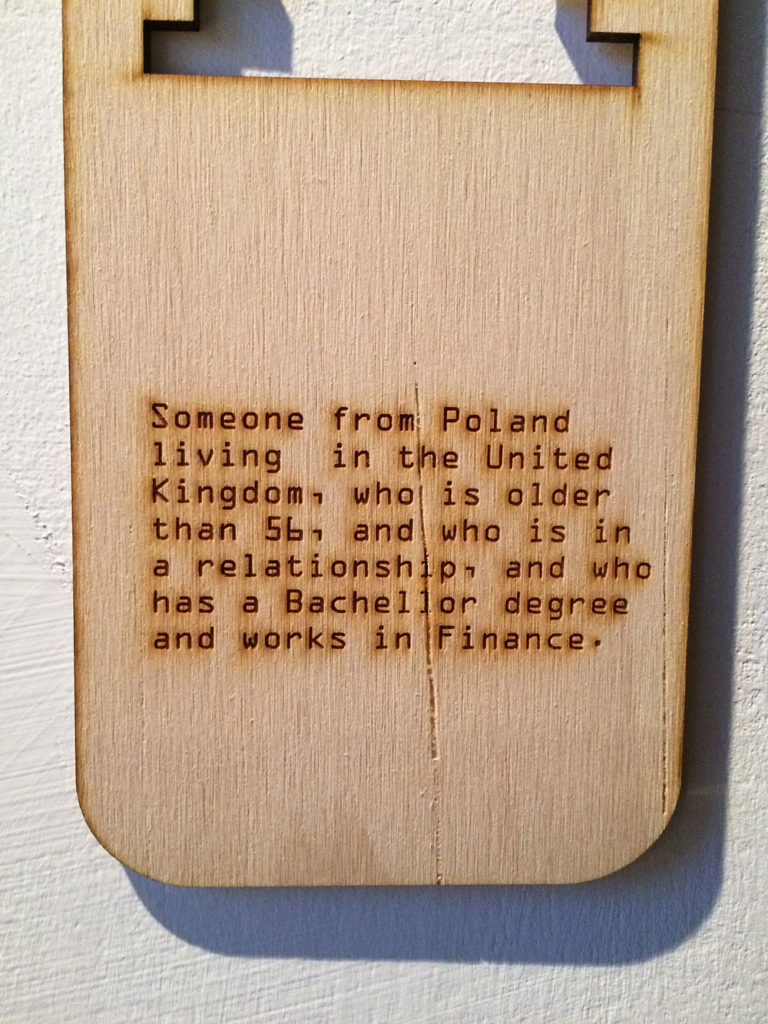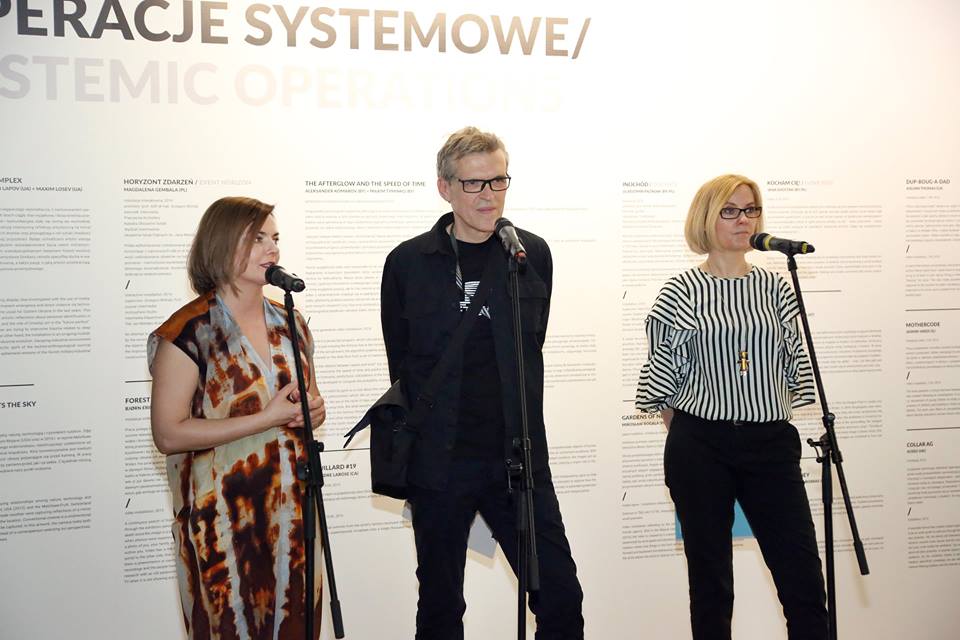The leitmotif and title of the 17th Media Art Biennale WRO is Draft Systems. It is a timely and highly relevant choice, as there is an inescapable feeling of being at a junction of history. Established systems – political, economic, and social – are being tested to their very limits. New systems, or drafts of systems, are coming to the fore. Liberal democracy, famously hailed as the end of history in the early 90s, is in retreat – for instance, Freedom House, an NGO tracking democratisation across the globe, showed that on the whole, the world has become less democratic in 2017. The economic model of open trade is being challenged by populist politicians with vows of physical and intangible barriers being erected to stop the free flow of goods, services, and most of all, people. What was not so long ago seen as a source of prosperity is now labelled the root cause of all misery. Social relationships are pushed to their limits, too; crystallising previously dormant identities – divisions are only becoming starker between the elites and the ‘deplorable’, the patriots and those of the worst kind (the gorszy sort), the internationalists and the nationalists. The success of the 2015 Paris Agreements is now being jeopardised by those who question the well-established scientific facts of climate change. Finally, the very notion of an enlightened society built on facts and truths is under siege. If there ever was a moment to focus on systems, surely it is now.
Over a hundred artists from around the world have taken part in WRO and presented their works in 15 venues across the city of Wrocław. The first five days constituted the festival’s key events – including exhibitions, film screenings, conferences, concerts, performances and competitions, with the First Prize being awarded by the artistic director of WRO, Piotr Krajewski. Some key themes were particularly noticeable in this varied and multi-layered festival. First and foremost, there was a focus on art that studies and tests the nature of systems, in line with the title, which according to the organisers represents ‘the mutability of the world’s regulatory systems, highlights their complexity and instability, underscores their volatile control-defying nature and foregrounds on-going reorganisations of reality’. What captured our attention were the works commenting on aspects of social media exposure and identity. Regarding form, there was a strong selection of video screenings and a rich programme of audio-visual performances. The focus on systems was visible in the work exhibited in the main curated group shows at the National Museum, Renoma and Feniks Department Stores, Entropia Gallery, the basements of the White Stork Synagogue, and many more. Among the presented works, three, in particular, caught our eye.
The triptych “We – The Common Body”, a multisensory art installation by Elvin Flamingo and the artistic duo Infer (Radosław Deruba & Patryk Chyliński), was the winner of the First Prize at this year’s WRO. It marks the second time in a row that Flamingo has won the first prize.
The work “We – The Common Body” consists of three parts; a sphere-incubator inhabited by thousands of earthworms; thirteen domes arranged in the hexagon, and a death penalty chair with a VR helmet attached to it. The three parts are interrelated, and developments in one part have an influence on the other two. Elvin explains that in this incredibly complex and intricate system, “the most important thing is to maintain good conditions in the earthworms’ habitat because they are in control. Everything would die; there would be no life. Everything would stop shining. […] Everything is connected and driven by the earthworms”. He describes the work as about “the end of man – a bit about the end of a human era and the need to ponder humans’ inflated egos. Hence the inspiration for the death penalty chair. Entering virtual reality in the piece takes you on such a journey”. I came away thinking of the centrality of dispersed organisms, which individually may be irrelevant, but collectively and unconsciously fuel other parts of the system. The viewer joining the piece by sitting in the death chair merely becomes a recipient of the messages generated by the system of earthworms.

Elvin Flamingo and artistic duo Infer (Radosław Deruba & Patryk Chyliński, We – The Common Body, Installation 2016, fot. Damian Śmigielski
Ioan O Cernei’s work entitled ‘Embroidered Data’ was presented at the group exhibition ‘Revamp’ at the Entropia Gallery. This on-going interactive installation began in 2015. The work consists of an object – an embroidery pattern hanging on the wall – and a piece of software that allows the creation of individual patterns. These are done based on answers to a few basic questions such as where are you from, where do you live, etc. The regional markers of the patterns are created by comparing the user’s country of origin with their country of residence, weighed against the whole European continent on factors such as GDP, population dimensions, cultural diversity and minorities. As Ioan explained, ‘the idea started initially from the problem that the last generation of the embroideries and weavers in Romania is dying out. I was then looking for a way to use technology to maintain this tradition. This turned out to be more difficult and complex than I anticipated. It is coming as a use of identity as these patterns are a sort of language inside the patterns’. Textile craft ornament – embroideries, knitting patterns and weaving patterns – can be, and has been, used to code and communicate personal information. While the project is about the identity, I also read it as an engagement with the history of computer systems – the Jacquard loom is often mentioned as a precursor of modern computers. First looms of that kind depended on a form of code developed to allow efficient mass production. In this clever work, the code is used again to determine patterns on the fabric/paper; capable of mass production but with a convincing illusion of uniqueness.

Ioan O Cernei, Embroidered Data, interactive installation + objects, 2015-2017, photo Contemporary Lynx
The work titled ‘Facebook Algorithmic Factory’ shown at the Barbara Infopoint was created by an artist-researcher team; Katarzyna Szymielewicz – the researcher and journalist from the Panoptykon Foundation whose self-appointed mission is to protect fundamental rights and freedoms in the context of fast-changing technologies and growing surveillance; Vladan Joler – the director of the Share Foundation who is leading a SHARE Lab, a research and data investigation lab for exploring different technical aspects of the intersections between technology and society; and Paweł Janicki – an independent media artist and producer working with interactive systems.
The work aims to show/prove/visualise the algorithms that decide the content presented on Facebook news feeds, what will be censored or deleted, which ideas will spread and which news will gain most visibility. The audience can listen to three stories by Julia, Ralph and Magda talking about their experience with Facebook. They can also hear the “voice of the company” calmly responding to their questions and frustrations.
The beam of light, which can be followed on the screen – as a digital map – reveals the logic of the algorithmic data processing which governed our three characters and their relationship with Facebook. The video projection highlights the “data factory” elements associated with each of the heard stories.
“Facebook Algorithmic Factory” is a complex work, which began life as a research project. Only later did it turned into an intriguing new media interactive installation conceived in collaboration with the artist Paweł Janicki. The piece shed light on invisible processes that happen inside the world’s largest social network. As explained by Szymielewicz: ‘In this project we wanted to shake people and make them aware that we are part of this big machine calculated to have power based on knowing more about us than we sometimes know about ourselves.’ The work feels particularly relevant given the current controversies about the role of FB in the dissemination of fake news to influence political outcomes or allow radicalisation and terror, but also more broadly, poses questions around the utopia of the self-governing internet, an internet held by a few digital giants.

Katarzyna Szymielewicz, Vladan Joler, Paweł Janicki, Facebook Algorithmic Factory, artistic research project + interactive installation, 2017, fot. Damian Śmigielski
The motto of the festival was a manifesto by Donella Meadows – a pioneering American environmental scientist, teacher, and writer best-known as the lead author of the influential book ‘The Limits to Growth and Thinking in Systems: Primer’. In the manifesto, she said ‘We exaggerated our own ability to change the world. We did so not with any intent to deceive others, but in the expression of our own expectations and hopes. Systems thinking for us was more than subtle, complicated mindplay. It was going to Make Systems Work.
But there it was, the message emerging from every computer model we made. Living successfully in a world of systems requires more of us than our ability to calculate. It requires our full humanity – our rationality, our ability to sort out truth from falsehood, our intuition, our compassion, our vision, and our morality.’
A tall task indeed, but one which the organisers as well as the artists taking part embraced to make the latest edition of the WRO Biennale a success.
Donella Meadows: Dancing with Systems
1. Get the beat.
2. Listen to the wisdom of the system.
3. Expose your mental models to the open air.
4. Stay humble. Stay a learner.
5. Honor and protect information.
6. Locate responsibility in the system.
7. Make feedback policies for feedback systems.
8. Pay attention to what is important, not just what is quantifiable.
9. Go for the good of the whole.
10. Expand time horizons.
11. Expand thought horizons.
12. Expand the boundary of caring.
13. Celebrate complexity.
14. Hold fast to the goal of goodness.
Donella H. Meadows, “Dancing with Systems” (excerpts from her last unfinished book, 2001). Courtesy of the Donella Meadows Institute











